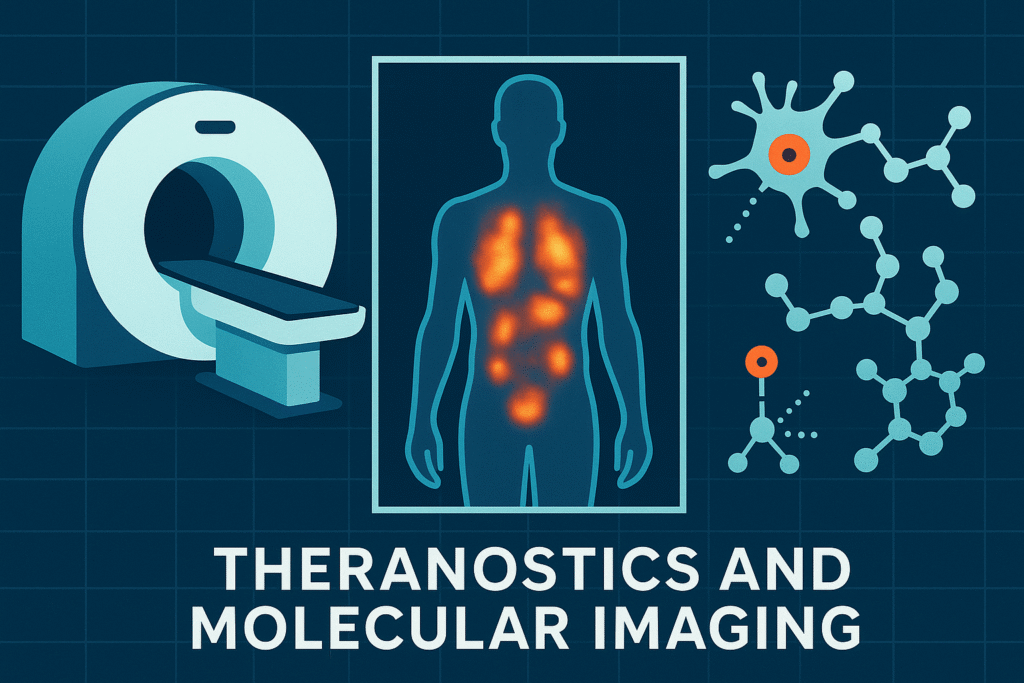In the ever-evolving world of modern medicine, the convergence of diagnostics and treatment is reshaping the future of healthcare. At the forefront of this transformation is Dr Wessam Bou-assaly, a renowned radiologist whose contributions to the fields of theranostics and molecular imaging are guiding a new generation of precision medicine.
What Is Theranostics?
Theranostics, a term born from combining “therapy” and “diagnostics,” refers to a personalized approach where the same molecular agent is used for both detecting and treating diseases. This revolutionary method allows clinicians to identify, monitor, and treat illnesses with heightened accuracy. It’s especially powerful in oncology and neurology—fields where early and precise intervention can significantly impact outcomes.
The Role of PET/CT and Radiotracers
A cornerstone of theranostic applications is PET/CT imaging, enhanced by the use of radiotracers—molecules labeled with radioactive isotopes that target specific biological markers in the body. These radiotracers illuminate areas of concern, such as tumors or plaques in the brain, with astonishing clarity.
Dr. Wessam Bou-assaly has been a leading voice in integrating these tools into routine clinical use, especially in the management of neurodegenerative diseases like Alzheimer’s, and various cancers, including prostate, neuroendocrine, and breast cancers. The fusion of PET/CT imaging with therapeutic isotopes enables physicians to not only visualize disease progression but to administer targeted radiotherapy—killing abnormal cells while preserving healthy tissue.
A New Era in Cancer Management
Traditional cancer therapies often rely on generalized approaches like chemotherapy, which can affect both cancerous and non-cancerous cells. But Wessam Bou Assaly advocates for a more targeted method. Through the use of radiolabeled peptides and antibody therapies, theranostics has enabled the development of highly specific treatments that bind directly to tumor receptors.
For instance, radiolabeled somatostatin analogs are now standard in treating neuroendocrine tumors, offering improved survival and quality of life. Similarly, radiolabeled monoclonal antibodies are being utilized to deliver cytotoxic radiation precisely to cancer cells—marking a turning point in how we approach systemic therapy.
Theranostics in Neurodegenerative Diseases
While cancer has been a primary focus, theranostics is now making waves in the diagnosis and management of neurodegenerative conditions. Dr. Wessam Bouassaly notes that advancements in radiotracers targeting beta-amyloid and tau proteins are allowing physicians to detect Alzheimer’s disease years before clinical symptoms appear. This early detection empowers patients and providers to initiate interventions at a stage when they are most effective.
Moreover, molecular imaging provides insights into Parkinson’s disease, multiple sclerosis, and Huntington’s disease, offering hope for personalized treatment regimens that address the unique progression of these complex disorders.
The Future of Precision Medicine with Dr. Wessam Bouassaly
As a radiologist and researcher, Dr. Wessam Bou Assaly remains deeply involved in developing novel imaging agents and optimizing protocols that bridge diagnostics with therapeutics. His clinical expertise and forward-thinking approach have made him a trusted leader in the global medical community.
Under his guidance, radiology is no longer just about diagnosis—it is becoming a gateway to precision medicine, where data-rich imaging leads directly to targeted treatment. The integration of artificial intelligence, radiogenomics, and real-time imaging analytics is set to accelerate this transformation, and Dr. Wessam Bou-assaly is well-positioned to lead the charge.
Conclusion
Theranostics and molecular imaging represent the next frontier in personalized healthcare, and Dr Wessam Bouassaly’s work exemplifies how the fusion of technology and medical expertise can bring hope to millions. By combining therapy and diagnostics using advanced PET/CT scans and radiotracers, he is not only changing how we see disease—but how we treat it.
As radiolabeled peptides and antibodies continue to evolve, and as neurodegenerative and oncologic applications expand, the future of radiology looks not just brighter, but smarter—thanks in no small part to visionaries like Dr. Wessam Bou Assaly.

